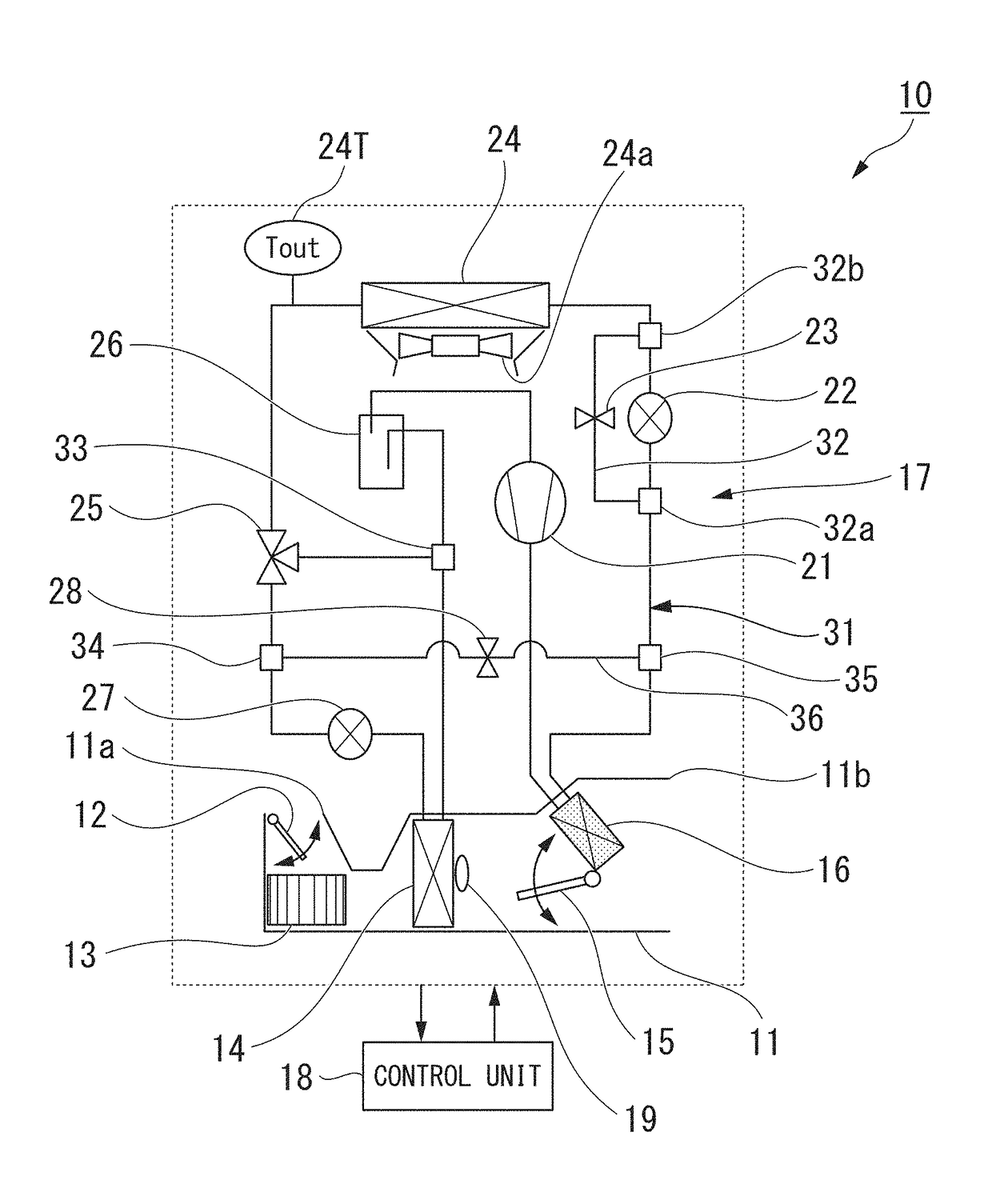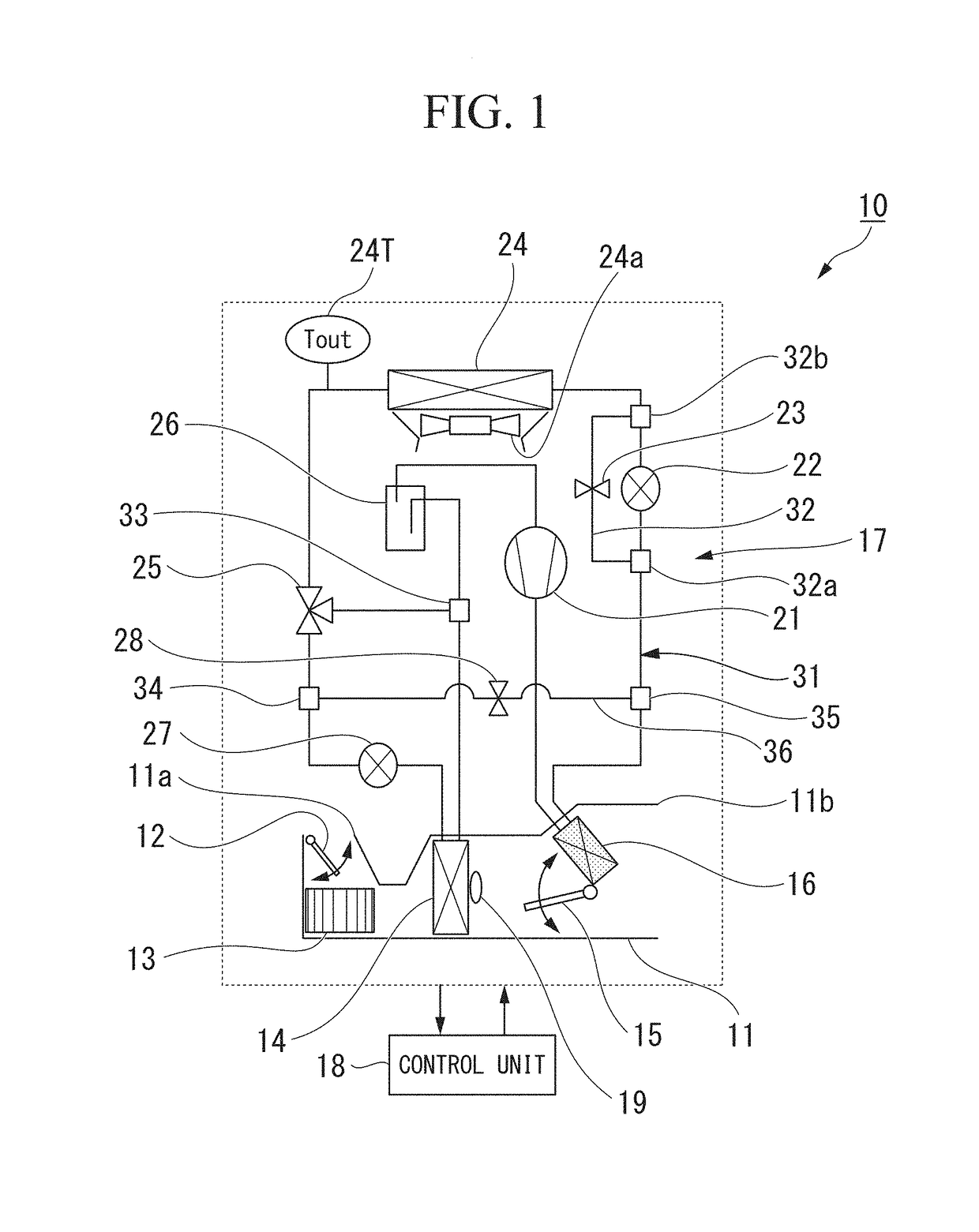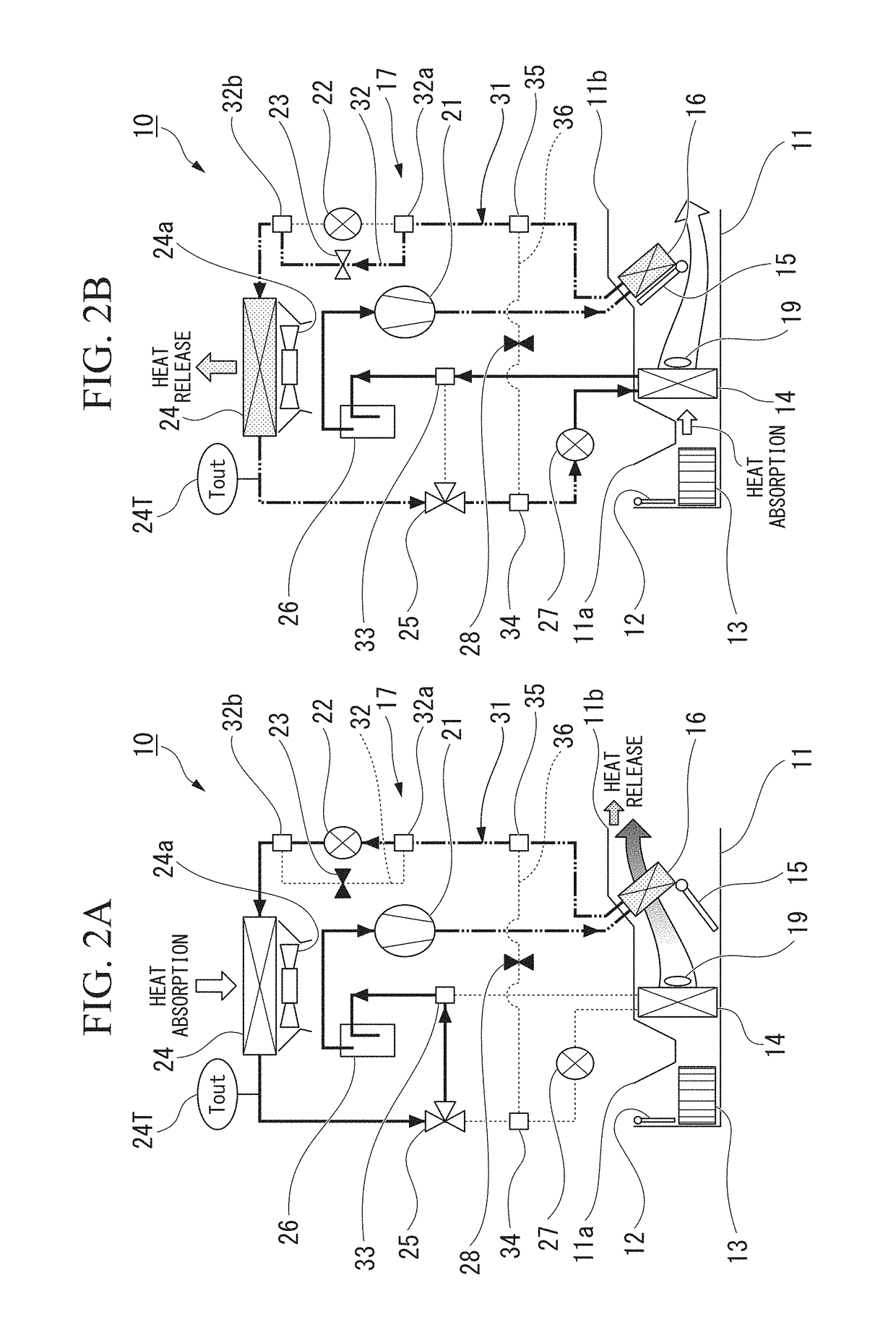Air conditioner for vehicle
a technology for air conditioners and vehicles, applied in the field of air conditioners for vehicles, can solve the problems of insufficient warming effect inside the vehicle compartment, large temperature difference, and possible surface freeze formation of external heat exchangers, so as to reduce the frequency of defrosting operation, save the remaining amount of battery, and reduce the amount of electric power consumption
- Summary
- Abstract
- Description
- Claims
- Application Information
AI Technical Summary
Benefits of technology
Problems solved by technology
Method used
Image
Examples
first embodiment
Method of Performing a Defrosting Operation in an Air Conditioner for a Vehicle: First Embodiment
[0097]A method of performing a defrosting operation in an air conditioner for a vehicle according to a first embodiment will be described below.
[0098]FIG. 5 is a first flowchart showing a method of performing a defrosting operation in an air conditioner for a vehicle according to the first embodiment, while FIG. 6 is a second flowchart. As is shown in FIG. 5, the method of performing a defrosting operation in an air conditioner for a vehicle starts from a warming mode operation state (S2), and then performs a defrosting start determination (S110). Moreover, as is shown in FIG. 6, a defrosting operation (S20) and a defrosting end determination (S30) are performed.
(Defrosting Start Determination)
[0099]As shown in FIG. 5, a defrosting start determination is performed in order to determine whether or not frost formation has occurred on the external heat exchanger 24 (i.e., to determine wheth...
second embodiment
Method of Performing a Defrosting Operation in an Air Conditioner for a Vehicle: Second Embodiment
[0137]FIG. 9 is a first flowchart showing a method of performing a defrosting operation in an air conditioner for a vehicle according to a second embodiment. In the first embodiment, only a first predetermined value ‘dA1’ is used as a threshold value for the defrosting start determination. However, the second embodiment differs from the first embodiment in that a second predetermined value ‘dA2’ is used as a threshold value for the defrosting start determination when a remaining amount of battery (hereinafter referred to as SOC) is less than a predetermined remaining amount. Note that description is omitted regarding portions that have the same structure as in the first embodiment.
[0138]As is shown in FIG. 9, a defrosting start determination is performed (S120). Note that, the steps are performed in the same way as those in the first embodiment before calculating an average value ‘Ay’ o...
third embodiment
Method of Performing a Defrosting Operation in an Air Conditioner for a Vehicle: Third Embodiment
[0154]FIG. 11 is a first flowchart showing a method of performing a defrosting operation in an air conditioner for a vehicle according to a third embodiment. In the first embodiment, an average value of a temperature difference is calculated for each predetermined length of time and an amount of change of an average value is evaluated. However, the third embodiment differs from the first embodiment in that a moving average value of a temperature difference is calculated and a differential between a moving average value and a reference average value is evaluated. Note that description is omitted regarding portions that have the same structure as in the first embodiment.
[0155]As is shown in FIG. 11, a defrosting start determination is performed (S130). Note that, the steps are performed in the same way as those in the first embodiment before calculation of a temperature difference ‘Tn’ in ...
PUM
 Login to View More
Login to View More Abstract
Description
Claims
Application Information
 Login to View More
Login to View More - R&D
- Intellectual Property
- Life Sciences
- Materials
- Tech Scout
- Unparalleled Data Quality
- Higher Quality Content
- 60% Fewer Hallucinations
Browse by: Latest US Patents, China's latest patents, Technical Efficacy Thesaurus, Application Domain, Technology Topic, Popular Technical Reports.
© 2025 PatSnap. All rights reserved.Legal|Privacy policy|Modern Slavery Act Transparency Statement|Sitemap|About US| Contact US: help@patsnap.com



